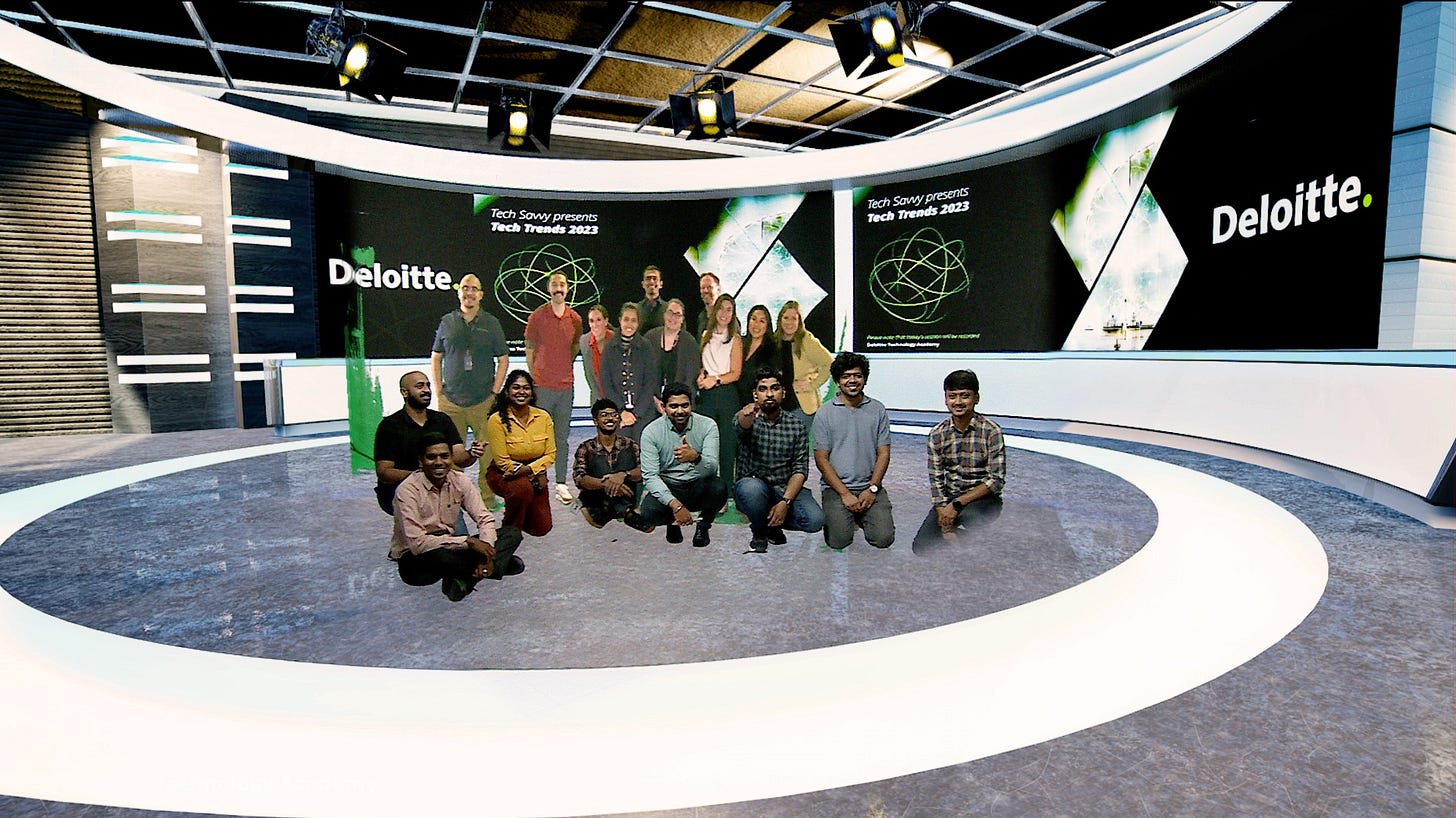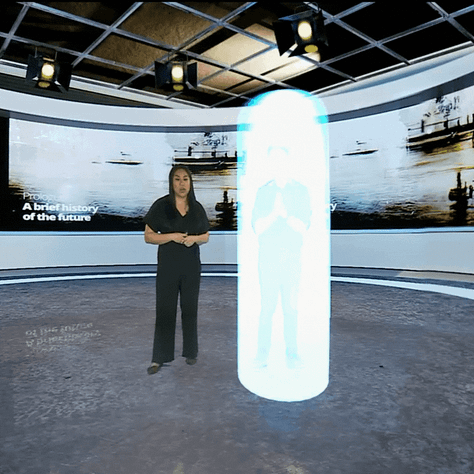Beam me in: The future of storytelling
New immersive technologies are paving the way for more engaging and entertaining virtual conferences for all kinds of enterprises
As futurists, we’re charged with (and thrilled with) finding out what’s new and next in emerging technology for the enterprise. We’re equally dedicated to storytelling in a way that turns complex topics into simple, but not simplistic, insights. But getting a chance to combine cutting-edge technology with cutting-edge storytelling? Well, that’s the cherry on top.
Every year, when we launch our annual Tech Trends report, we plan an extensive campaign to promote the report in the market and with our Deloitte colleagues. When we reflected on how to evolve our firmwide learning event, we challenged ourselves to enhance our storytelling using some of the very technologies we featured in Tech Trends.
Our task? Tell a story that is:
Immersive—more interactive and cohesive than staring at talking heads in boxes
Engaging—captures audience attention in a new way to increase retention
Virtual—accessible no matter where you are located around the world
The proposed solution: tell a rich, visual, and interactive story that is livestreamed to a virtual audience using Deloitte’s XR stage—a production that blends human presence with digital assets (holograms, augmented reality, and 3D environments).
“For years, our stories have changed to reflect our new reality: You won’t find a modern TV show where they just pretend that cell phones or digital worlds don’t exist. And now, it’s high time for our storytelling itself to change.”
- Abhijith Ravinutala, NExT futurist, Deloitte Consulting LLP
What is the XR stage?
XR stands for extended reality and, in the context of the Deloitte XR stage, also represents the umbrella of mixed reality production capabilities occurring while presenters stand and present on an LED stage.
Extended reality (XR) means that the software used to generate a digital environment knows where the physical LED stage ends and stitches together the virtual environment to fill out the rest of the visual frame for the audience.
Augmented reality is used to project digital assets (visual graphics and effects) on top of the virtual scene.
Meanwhile, the IRL humans are on stage (or a satellite location with a green screen) providing a mixed reality of physical and virtual worlds.

Did it work?
Spoiler alert: yes.
After several weeks of preparation—storyboarding, scripting, developing digital assets—the production team, planning team, and on-stage presenters convened in two physical locations: in Hyderabad at the DU Leadership Center in India and in Hermitage, TN, our satellite (green screen) filming location for our US-based presenters. What resulted was a visually engaging, live “TV news studio” where we reported the latest insights from Tech Trends for over 1,000 virtual participants around the globe.
My US-based co-presenters and I showed up as holograms in the news studio, while our India-based colleagues (standing on the LED XR stage) were shown in the extended reality of the very same news studio. As we beamed in to describe the latest trends, informational graphics were projected onto the virtual environment to bring the content to life.
As anchor for our Tech Trends news segment, I found the experience offered a more natural flow of conversation with my co-presenters while preserving a seamless visual for our audience. Plus, I lived out my talk show host dreams!



Looking forward
As I reflect on the experience—from initial brainstorming and storyboarding to the live studio event—I believe we fundamentally redefined what tuning into a webinar means.
The event was a smashing success, generating interest in the immersive technologies we used across multiple parts of our business. But we still have a ways to go. While the event was successful, it wasn’t without its technical challenges—beaming in had quite a bit more latency than Star Trek, and certain visualizations missed their mark.
I see many opportunities on how we can evolve the art of virtual storytelling (imagine talking about SpaceTech from a virtual space station setting) as well as many opportunities where the enabling technologies need time to mature, advance, and become more accessible and available. In other words, the technologies need time to fully turn the corner from tech to toy to full-blown enterprise tool.
Still, I’m optimistic and eager, having glimpsed that pending future: A future where we build a shared space for presenters and audience members to be immersed into the virtual experience, no matter their location, with seamless speed, and more dynamic and flexible visualizations (perhaps generated in real-time).
Our future awaits,





